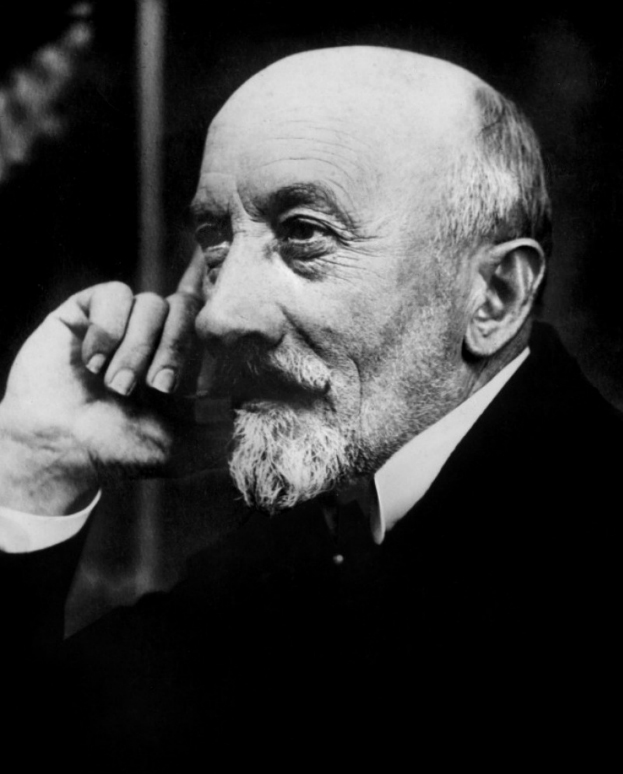.

BIOGRAPHY | George Melies
Georges Melies (Marie-Georges-Jean M?li?s) was born 8 December 1861 in Paris. His father had moved to Paris in 1843 as a shoemaker and began working at the boot factory, where he met M?li?s' mother. Eventually the two married, was founded a high-quality boot factory on the Boulevard Saint-Martin, and had sons Henri and Gaston; by the time of third son Georges' birth, the family had become wealthy.
Georges Melies attended the Lyc?e Michelet from age seven until it was bombed during the Franco-Prussian War; he was then sent to the prestigious Lyc?e Louis-le-Grand
The Theatre Robert-Houdin

While working at his family factory, M?li?s continued to cultivate his interest in stage magic, attending performances at the Th??tre Robert-Houdin, which had been founded by the famous magician Jean Eug?ne Robert-Houdin. He also began taking magic lessons from Emile Voisin, who gave him the opportunity to perform his first public shows, at the Cabinet Fantastique of the Gr?vin Wax Museum and, later, at the Galerie Vivienne.
In 1888 M?li?s's father retired, and Georges M?li?s sold his share of the family shoe business to his two brothers. With the money from the sale and from his wife's dowry, he purchased the Th??tre Robert-Houdin. As owner of the Th??tre Robert-Houdin, M?li?s began working more behind the scenes than on stage. Under his leadership, he acted as director, producer, writer, set and costume designer as well as inventing many of the magical tricks. With the theatre's growing popularity, he brought in such famous magicians as Buatier De Kolta, Duperrey, and Raynaly to the theatre.
On 28 December 1895 M?li?s was present at the legendary first public screening of the Lumi?re brothers' films at the Grand Caf? in Paris. M?li?s immediately offered the Lumi?re brothers 10,000 francs for one of their cameras, which they refused (as they had refused much larger offers from the Gr?vin Wax Museum and Folies Berg?re). M?li?s travelled to London to purchase several films and an Animatograph film projector from inventor Robert W. Paul.
FIRST FILM
M?li?s began shooting his first films in May 1896, and screening them at the Th??tre Robert-Houdin by that August. At the end of 1896 he and Reulos founded the Star-Film Company, with Lucien Korsten acting as his primary camera operator. Many of his earliest films were copied and remakes of the Lumi?re brothers films, made to compete with the 2000 daily customers of the Grand Caf?. This included his first film Playing Cards, which is similar to an early Lumi?re film.
TRIP TO THE MOON
In 1902, M?li?s produced his most famous film, A Trip To The Moon. This delightful fantasy is still entertaining people today. Some of the effects are so well executed, it is difficult to tell just which technique was used. A Trip To The Moon unreels in 12 tableau, in M?li?s' trademark style using elaborate props, painted backdrops, and lots of girls. It poked gentle fun at the solemn works of Jules Verne and H.G. Wells.
THE ONE MAN BAND
These early special effects films were essentially devoid of plot. The special effects were used only to show what was possible, rather than enhance the overall plot. M?li?s's early films were mostly composed of single in-camera effects, used for the entirety of the film. For example, after experimenting with multiple exposure, M?li?s created his film The One Man Band, in which he played seven different characters simultaneously.
M?li?s directed 531 films between 1896 and 1913, ranging in length from one to forty minutes. In subject matter, these films are often similar to the magic theatre shows that M?li?s had been doing, containing "tricks" and impossible events, such as objects disappearing or changing size (first special effects).
The later years were not kind to M?li?s. Changes in public tastes, the rise of the narrative film, and the growing vocabulary of editing left his single take prosceneum-style films in the past, and he was forced to sell his studio. His wife died in 1913, and World War I destroyed the remainder of his fortune. In 1925, nearly bankrupt, he married his mistress and for the next 7 years sold the toys from her kiosk in the Gare Montparnasse. (This is roughly equivalent to finding Henry Ford is working the Autopia at Disneyland.) Astonishingly, he was not at all embittered.


Then two things happened which made his last years into something of a Cinderella story.
He was discovered at his kiosk by Leon Druhot, editor of the influential Cin?-Journal who publicized the shameful plight of this neglected giant of French film. Then, in 1929, a cache of his films was discovered and painstakingly restored. A gala was held, and overnight M?li?s was a celebrity again. Three years later he was given a pension, and in 1932 an apartment in a chateau converted into a home for cinema veterans, where he was visited by virtually every Hollywood mogul.
After making a radio broadcast in December 1937, he became ill and died a month later. He was 76.
Due to George Melies today we know such effects as matte painting background, installation in background, stop frame effects, layered background. He was the first man who make effects before industry has born.





